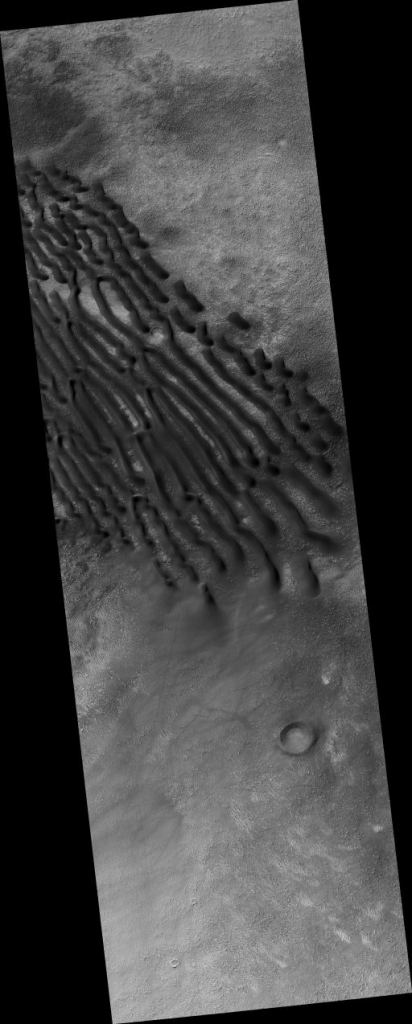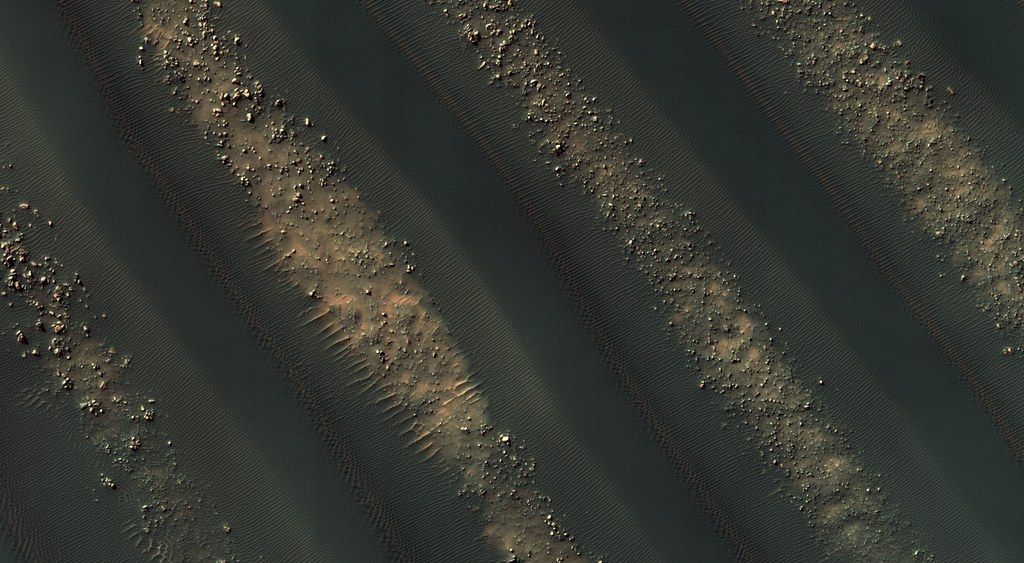Symmetry in nature is pleasing to look at, and even more so when that symmetry is novel. There’s plenty of it to see on Earth, as biological processes have a penchant for patterns. But finding it off-world is trickier, and sometimes more striking. Which is why a picture from HiRISE of some Martian dunes is so spectacular.
The picture was actually taken back in 2010, inside of a crater in Noachis Terra, in the red planet’s southern hemisphere, around 38 degrees by -42.5 degrees in latitude / longitude. The Mars Reconnaissance Orbiter HiRISE is riding along with was about 252 km above the planet’s surface when it snapped the image, which covers an area of about 25 square kilometers.

Credit: NASA / JPL / University of Arizona
Even with that relatively large size, the image still resolves objects that are less than a meter in size. But the most striking feature of the pictures is the similarity between the dunes, which are actually the thin dark lines. The area between them, the slightly lighter reddish material, is covered in boulders that appear as dots in the image.
Mars and Earth aren’t the only worlds in the solar system with these fascinating types of dunes. In fact, Titan has the Solar System’s largest linear dune field. Maybe we’ll get a glimpse of those in high resolution when Dragonfly makes a visit to Saturn’s largest moon in 2034.
Learn More:
UA – Dune Symmetry
Flicker – Dune Symmetry
Lead Image:
Symmetric dunes on Mars.
Credit: NASA / JPL / University of Arizona

